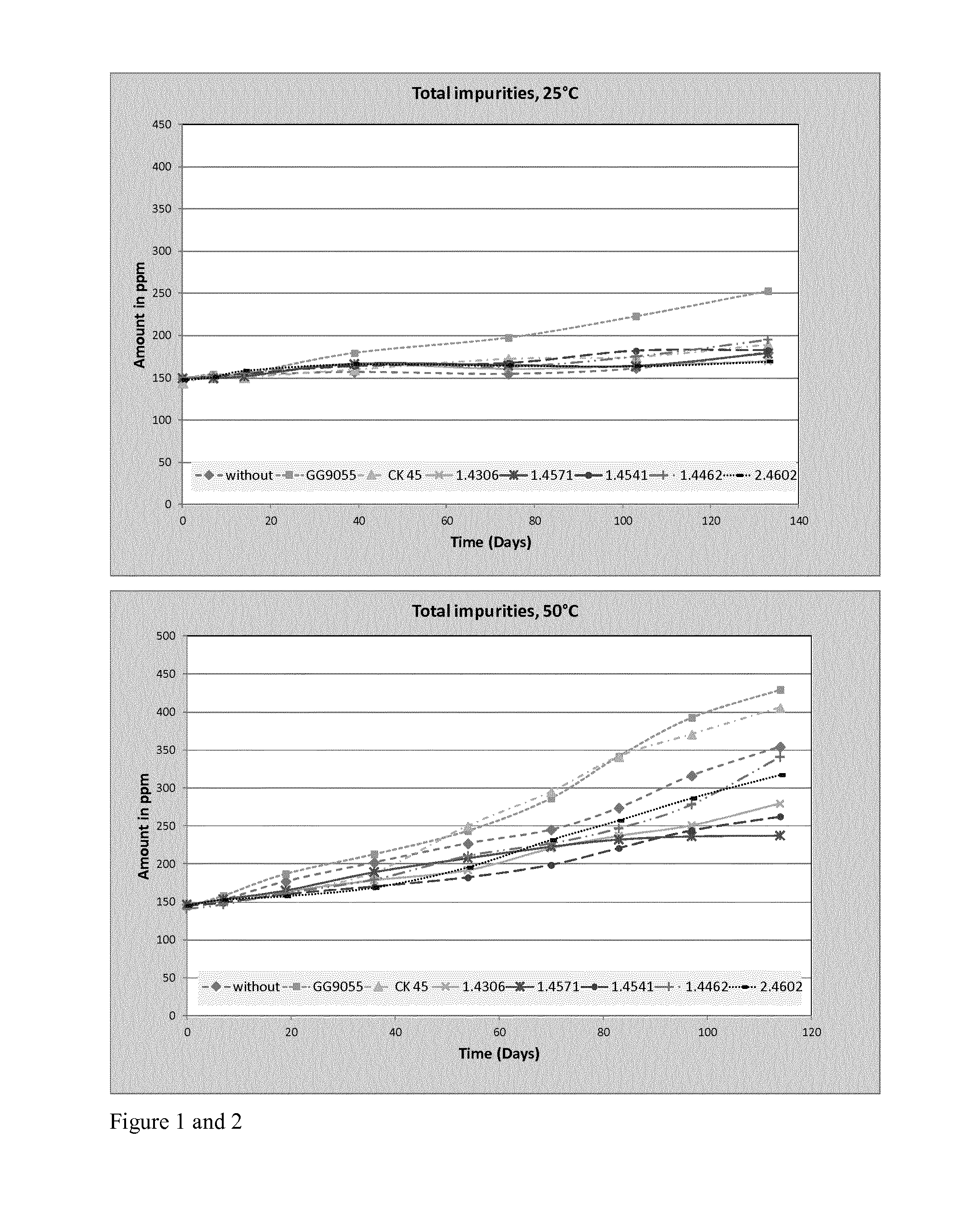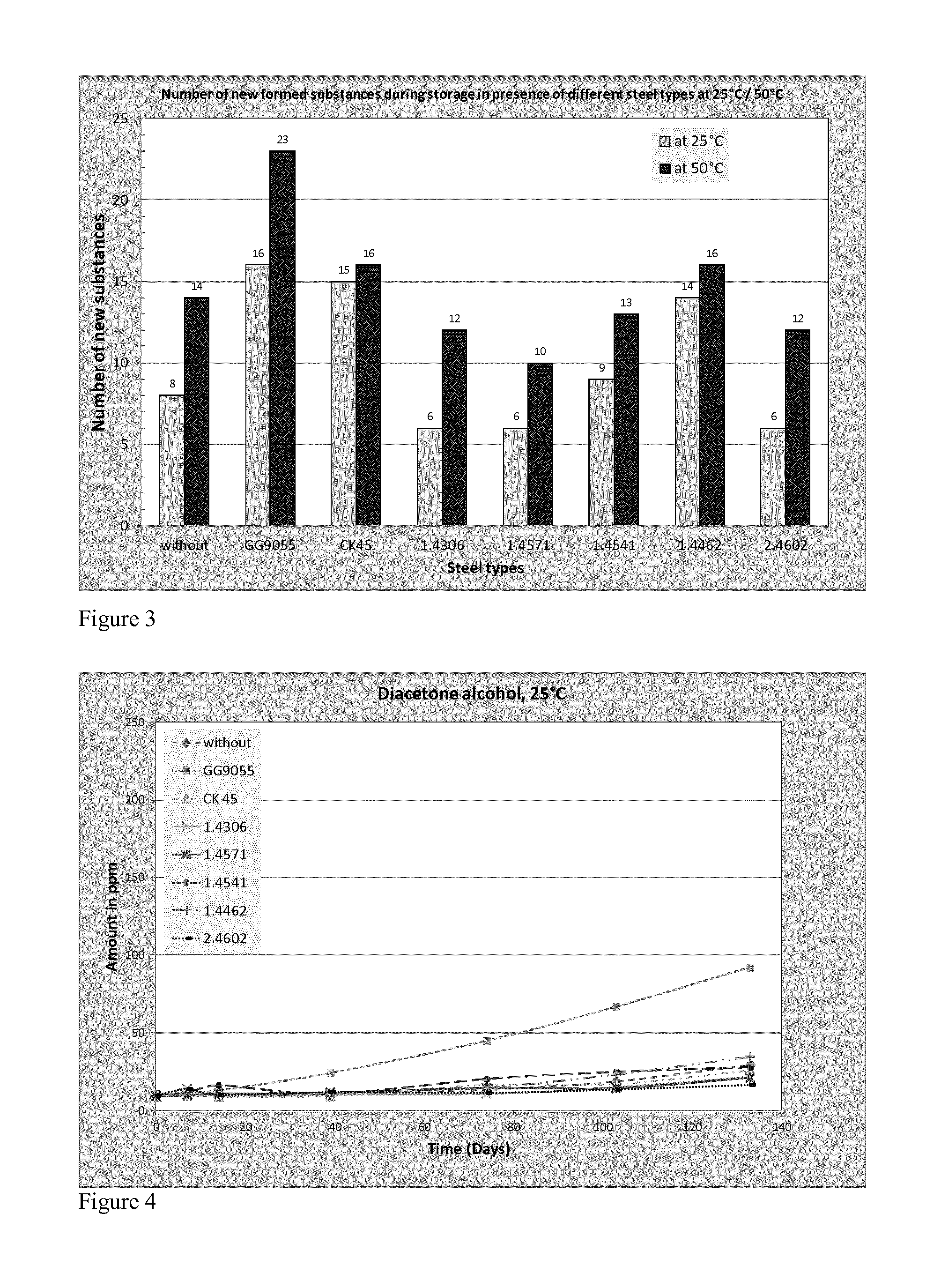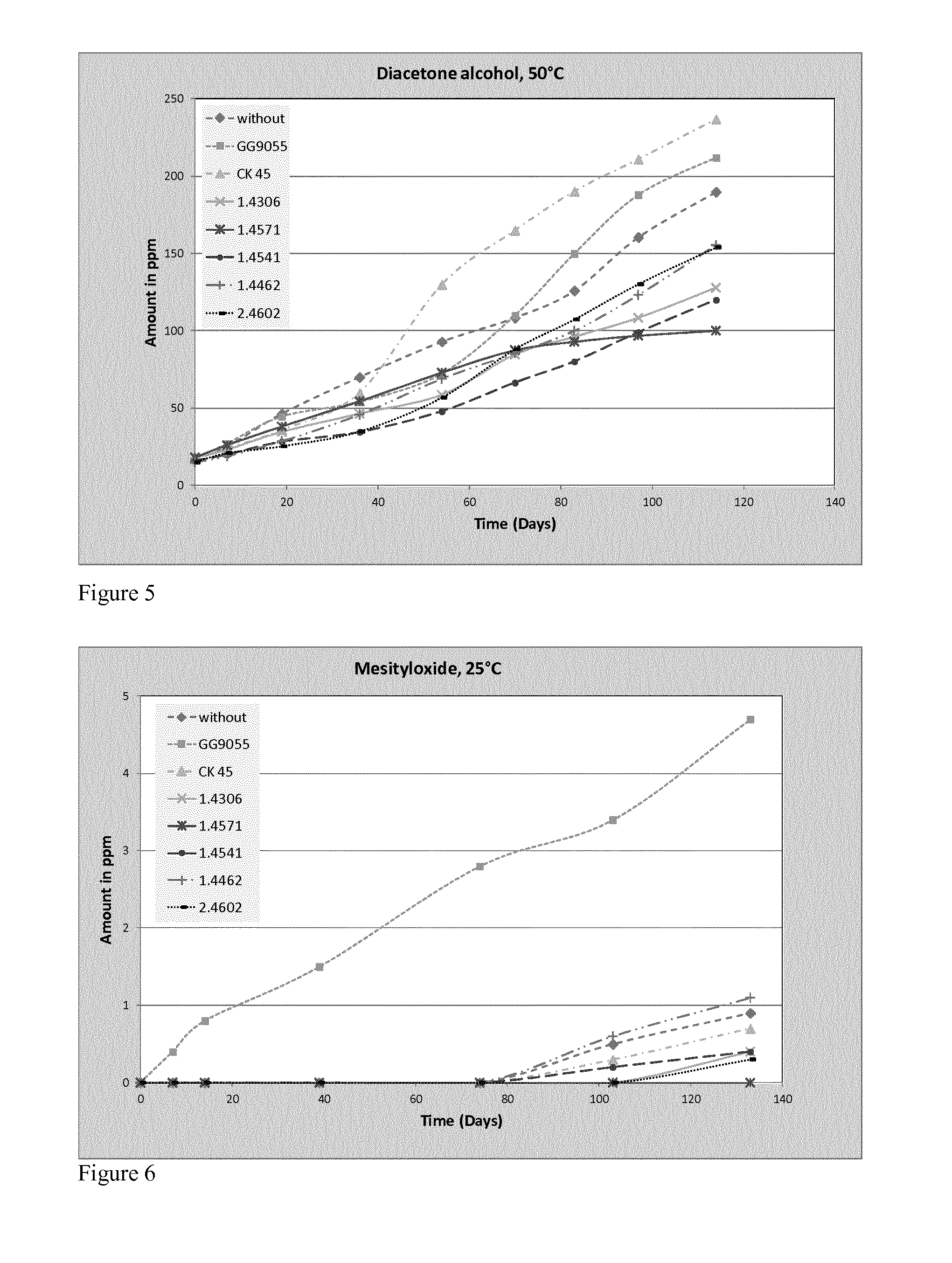Acetone storage
a technology of acetone and storage tank, which is applied in the field of storage of aldehydes and ketones, can solve the problems of reducing shelf life and quality issues, acetone with significant impurities might not meet the necessary specification after long-term storage, and tight purification requirements, and achieves the effect of reducing the formation of impurities
- Summary
- Abstract
- Description
- Claims
- Application Information
AI Technical Summary
Benefits of technology
Problems solved by technology
Method used
Image
Examples
examples
[0079]Various different stainless steel bars are tested along with carbon steel and cast iron as control experiments. The storage temperatures were defined at 25° C. and 50° C. The metals were used as bars and the surface area of each bar was approximately the same. Table 1 summarises the main elemental contents of the steels employed in the examples.
TABLE 1Used steel samples in the sample sets foracetone storage with its chemical analysisMetal TypeGG 9055CK 45Hastelloyelem.CastCarbonC22 -Content %ironSteel1.43061.45711.44621.45412.4602C3.440.430.0270.030.0190.0190.005Si1.770.290.560.470.40.510.026Mn0.470.581.341.491.511.910.26Cr0.020.1318.1514.8222.3617.1521.39Ni0.180.0910.711.585.729.65n.a.Mo00.05n.a2.163.17n.a.13.49
[0080]The storage experiments were carried out in transparent glass bottles, stored in the dark. The 50° C. samples were stored in a drying oven. Every few days samples were taken out and analysed by gas chromatography. Storage in the dark was chosen to minimize influe...
example 2
[0088]The results described above were obtained by continuous sampling of the acetone from the storage vessel. To determine whether continuous sampling was having an effect, a 2nd sample set was stored under the same conditions but without periodical sampling. The bottles were closed over 104 storage days and after opening an analysis was done. The results in comparison to the 1st sample set are shown in Table 4 (114 days=example 1). There is a small but insignificant difference in the storage days.
[0089]In case of MO in the 2nd sample set, except with GG9950, the formation of MO is approximately “zero”, although the DAA formation shows the same growth as the 1st sample set. Two possible reasons are limited oxygen content due to closed storage and no water elimination at DAA due to missing exchange of the water, because every opening of the bottles changes the humidity in the gas phase. Through this result the sum amount of the new formed impurities is lower as well and the number o...
PUM
| Property | Measurement | Unit |
|---|---|---|
| temperature | aaaaa | aaaaa |
| temperatures | aaaaa | aaaaa |
| diameters | aaaaa | aaaaa |
Abstract
Description
Claims
Application Information
 Login to View More
Login to View More - R&D
- Intellectual Property
- Life Sciences
- Materials
- Tech Scout
- Unparalleled Data Quality
- Higher Quality Content
- 60% Fewer Hallucinations
Browse by: Latest US Patents, China's latest patents, Technical Efficacy Thesaurus, Application Domain, Technology Topic, Popular Technical Reports.
© 2025 PatSnap. All rights reserved.Legal|Privacy policy|Modern Slavery Act Transparency Statement|Sitemap|About US| Contact US: help@patsnap.com



